Your Journey to a Healthier Life Starts Here
Free Insurance Verification
Verify Your Treatment Coverage
Verify Your Treatment Coverage
Explore a comprehensive guide to 39 inpatient, 69 outpatient, and 25 detox centers across North Dakota. Compare costs, reviews, and treatment options to find the perfect rehab facility for your needs.

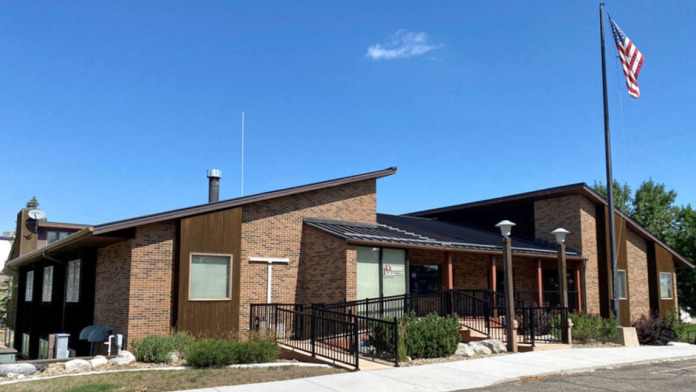 | ADAPT - Bismarck, NDADAPT is a comprehensive behavioral health agency based in Bismarck, North Dakota, that addresses addiction and mental health issues while offering electronic monitoring services. They also provide telehealth options across the state, making their services accessible to a broader audience.Key Features and Services: In-Person Services: ADAPT offers a variety of in-person services, including: Domestic Violence and Anger Management Classes: Programs aimed at helping individuals manage their emotions and behaviors. DUI Seminars and Evaluations: Educational sessions and assessments for individuals facing DUI charges. Substance Use and Minor in-Possession Evaluations: Comprehensive evaluations for individuals involved with substance use issues. Electronic Monitoring Services: ADAPT provides electronic monitoring throughout North Dakota and parts of Western Minnesota. This service includes: GPS Monitoring: Tracking the location of individuals restricted to their residences. Remote Alcohol Testing: Ensuring compliance with sobriety requirements through periodic checks. Smartphone Applications and Voice Recognition: Tools for individuals to check in and report their status. Collaboration with Law Enforcement: The organization actively collaborates with local law enforcement and the criminal justice system to inform decisions that reduce incarceration and recidivism. Their goal is to provide the necessary tools for clients to change their futures positively. Mental Health Services: ADAPT also offers mental health services, including: Relapse Prevention Programs: Strategies to help individuals maintain their recovery. Cognitive Restructuring Courses: Programs aimed at changing negative thought patterns that contribute to substance use and mental health issues. Booking and Payment: Services are provided by appointment only, and clients must prepay for classes or evaluations. Online booking is available for convenience. Conclusion: ADAPT is dedicated to providing effective solutions for individuals facing addiction and mental health challenges. With a wide range of services, including electronic monitoring and educational programs, the agency aims to empower clients to achieve lasting recovery and positive change. For more information about their services or to schedule an appointment, please contact ADAPT directly. 1720 Burnt Boat Drive, Suite 108, Bismarck, ND 58503 | Levels of Care:OutpatientAftercare Support12-Step Payment Options:Medicare Medicaid Self-Pay Options | ||
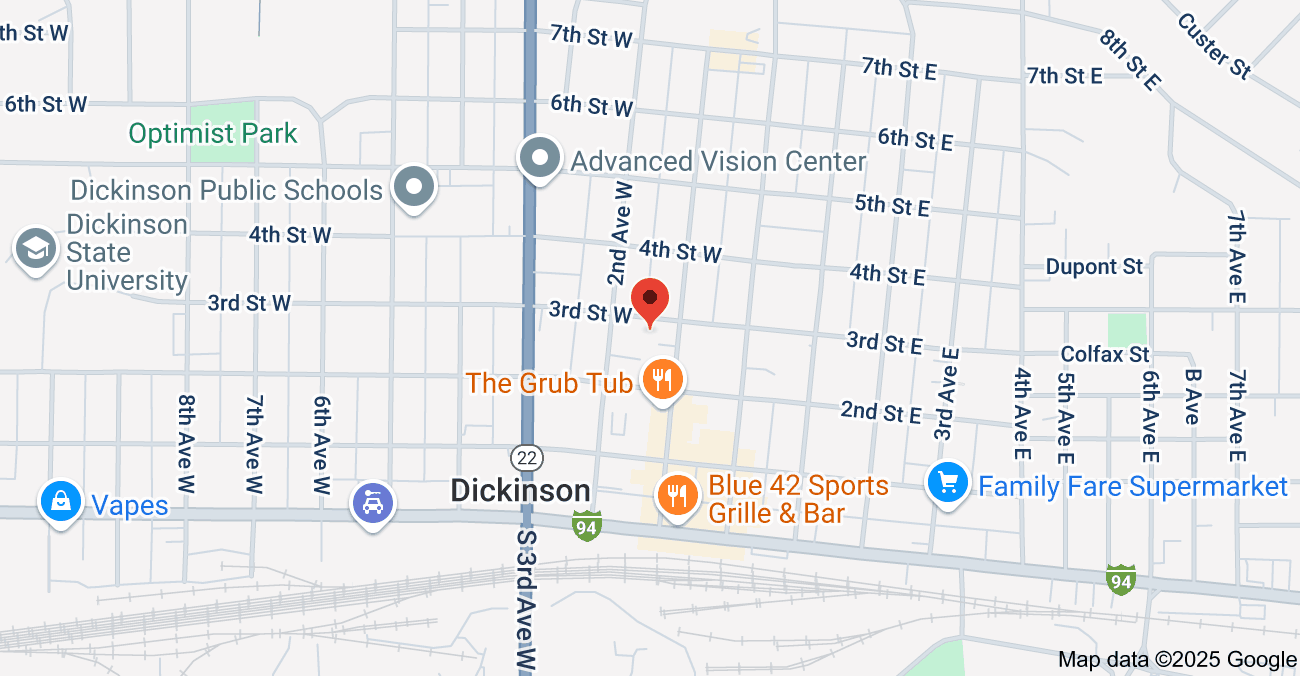 | ADAPT - Dickinson, NDADAPT – 3rd Street West is a rehabilitation center that provides outpatient treatment for individuals struggling with alcohol and/or substance addiction. The program is designed to support recovery through a variety of therapeutic services.Key Features and Services: Outpatient Treatment: The center specializes in outpatient services, allowing individuals to receive treatment while maintaining their daily activities and responsibilities. This flexibility is essential for those managing work, family, and personal commitments. Comprehensive Programs: ADAPT – 3rd Street West offers a range of therapeutic services, including: Anger Management: Programs aimed at helping clients understand and manage their anger effectively. Relapse Prevention: Strategies to help individuals identify triggers and develop coping mechanisms to maintain their recovery. Family Therapy: Engaging family members in the recovery process to foster a supportive environment and address any underlying relational issues. Skill Development: The center emphasizes the practice and acquisition of skills that empower clients to implement positive changes in their lives. This skills-based approach is designed to enhance personal growth and facilitate long-term recovery. Conclusion: ADAPT – 3rd Street West is committed to providing effective outpatient treatment for individuals facing alcohol and substance addiction. With a focus on skill development and comprehensive therapeutic support, the center aims to help clients achieve lasting recovery and positive lifestyle changes. For more information about their services or to inquire about admissions, please contact ADAPT – 3rd Street West directly. 141 3rd St W # 6, Dickinson, ND 58601 | Levels of Care:outpatientAftercare Support Payment Options:Medicare Medicaid Self-Pay Options | ||
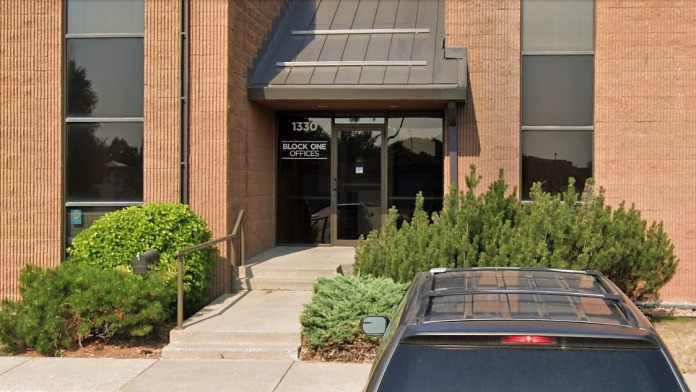 | ADAPT - Fargo, NDADAPT – Page Drive is a rehabilitation center that offers outpatient treatment for individuals dealing with alcohol and/or substance addiction. The program is designed to provide comprehensive support and resources to facilitate recovery.Key Features and Services: Outpatient Treatment: The center specializes in outpatient services, allowing individuals to receive treatment while continuing their daily lives. This flexibility is crucial for those balancing work, family, and other responsibilities. Comprehensive Programs: ADAPT – Page Drive offers a variety of therapeutic services, including: Anger Management: Programs designed to help individuals manage and express their anger in healthier ways. Relapse Prevention: Strategies and support to help clients avoid returning to substance use after treatment. Family Therapy: Involving family members in the recovery process to strengthen support systems and address relational dynamics. Skill Development: The center focuses on the practice and acquisition of skills that empower individuals to make positive changes in their lifestyles. This skills-based approach is aimed at promoting long-term recovery and personal growth. Conclusion: ADAPT – Page Drive is dedicated to providing effective outpatient treatment for individuals struggling with alcohol and substance addiction. With a focus on skill development and comprehensive therapeutic support, the center aims to facilitate positive lifestyle changes and support lasting recovery. For more information about their services or to inquire about admissions, please contact ADAPT – Page Drive directly. 1330 Page Dr., Suite #202B, Fargo, ND 58103 | Levels of Care:outpatientAftercare Support Payment Options:Medicare Medicaid Private insurance Self-Pay Options | ||
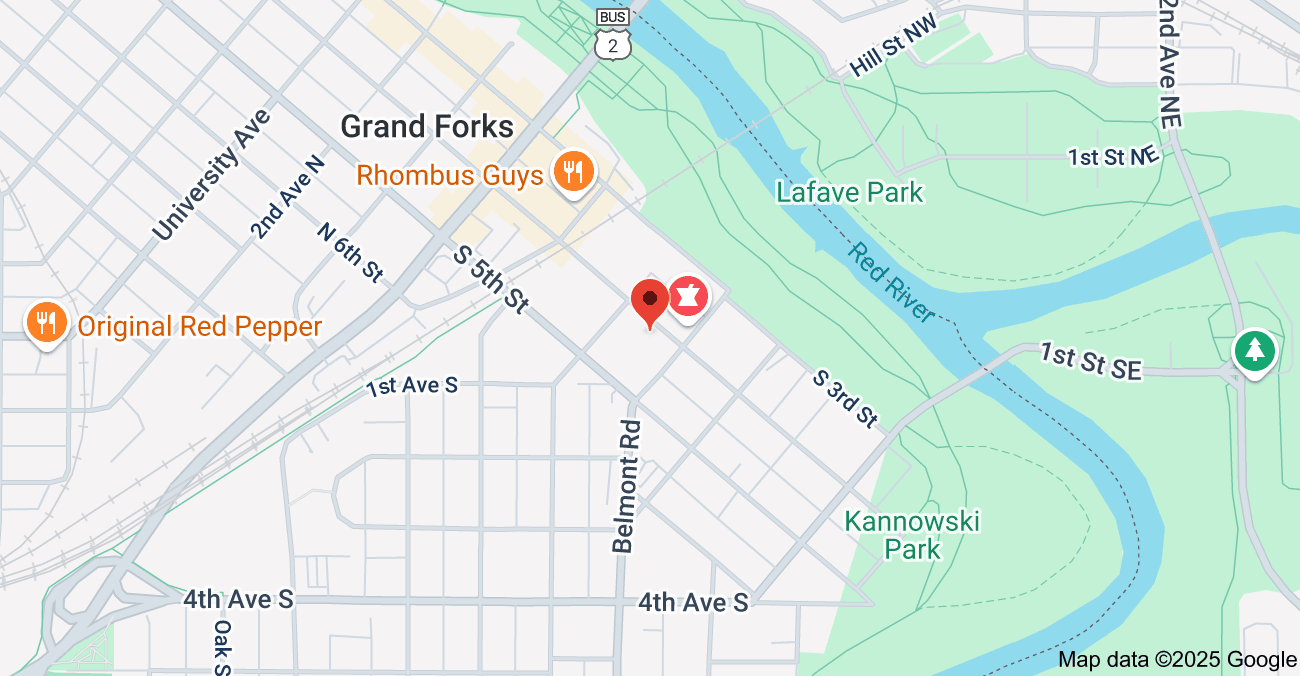 | ADAPT - Grand Forks, NDADAPT – South 4th Street offers outpatient treatment for individuals dealing with alcohol and/or substance addiction. The center is dedicated to providing a supportive environment and comprehensive services to facilitate recovery.Key Features and Services: Outpatient Treatment: The center specializes in outpatient services, allowing individuals to receive treatment while continuing their daily lives. This flexibility is important for maintaining personal and professional responsibilities. Comprehensive Programs: ADAPT – South 4th Street provides a range of therapeutic services, including: Anger Management: Programs designed to help clients manage and express their anger in constructive ways. Relapse Prevention: Strategies to equip individuals with tools to avoid returning to substance use after treatment. Family Therapy: Engaging family members in the recovery process to strengthen support systems and address relational dynamics. Skill Development: The center emphasizes the practice and acquisition of skills that empower clients to implement positive changes in their lifestyles. This skills-based approach supports personal growth and long-term recovery. Conclusion: ADAPT – South 4th Street is committed to providing effective outpatient treatment for individuals struggling with alcohol and substance addiction. With a focus on skill development and comprehensive therapeutic support, the center aims to help clients achieve lasting recovery and positive lifestyle changes. For more information about their services or to inquire about admissions, please contact ADAPT – South 4th Street directly. 201 South 4th Street, Suite 107, Grand Forks, ND 58201 | Levels of Care:outpatientAftercare Support Payment Options:Medicare Medicaid Self-Pay Options | ||
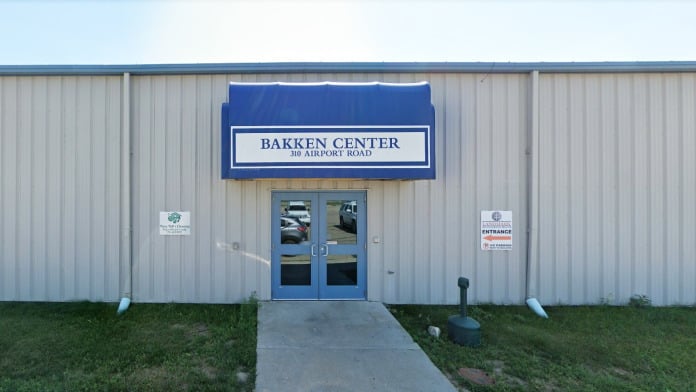 | ADAPT – Williston, NDADAPT – Airport Road offers outpatient treatment for individuals struggling with alcohol and/or substance addiction. The center is focused on providing a supportive environment and comprehensive services to facilitate recovery and personal growth.Key Features and Services: Outpatient Treatment: The center specializes in outpatient services, allowing individuals to receive treatment while managing their daily responsibilities. This flexibility is crucial for those balancing work, family, and personal commitments. Comprehensive Programs: ADAPT – Airport Road offers a variety of services, including: Anger Management: Programs to help clients effectively manage and express their anger. Relapse Prevention: Strategies to help individuals avoid returning to substance use after treatment. Family Therapy: Involving family members to strengthen support and address relational issues. Addiction Services: The center provides a range of drug and alcohol addiction services, including: Licensed Addiction Counseling DUI/Drug/Alcohol Evaluations Outpatient Treatment Services Aftercare Services DUI Seminars Minor In Possession Classes Tobacco Prevention Classes Drug Screenings and Substance Abuse Prevention Mental Health Services: Mental health services include: Vocational Counseling Domestic Violence Programs Family and Individual Therapy Group and Individualized Programs for Relapse Prevention Alcohol/Drug Testing Services: Certified lab results for testing services, which include: Drug Patch Testing Urine Testing Saliva Swab Testing Paternity Testing WebEx Internet Addiction Services: ADAPT – Airport Road offers confidential, HIPAA-approved WebEx Internet Addiction Services. This allows for evaluations, treatment, group classes, and individual counseling to be conducted online, making it accessible to clients across the state. Conclusion: ADAPT – Airport Road is dedicated to providing effective outpatient treatment for individuals facing alcohol and substance addiction, as well as mental health challenges. With a comprehensive range of services and a focus on skill development, the center aims to empower clients to achieve lasting recovery and positive lifestyle changes. For more information or to schedule an appointment, please contact ADAPT – Airport Road directly. 310 Airport Road, Suite # 150, Williston, ND 58801 | Levels of Care:outpatientAftercare Support Payment Options:Self-Pay Options Private insurance | ||
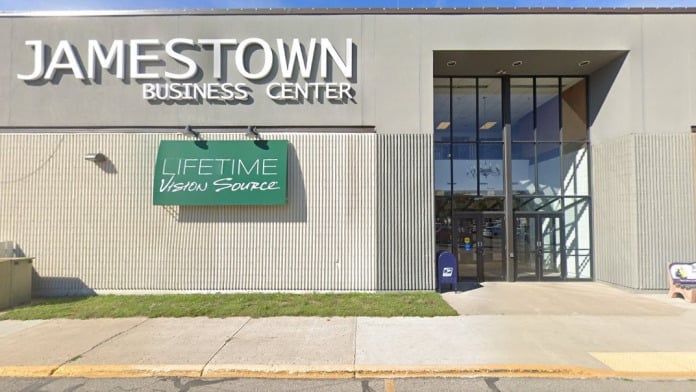 | Addiction and Counseling Services - Jamestown Business CenterAddiction and Counseling Services – Jamestown Business Center is a private rehabilitation facility dedicated to providing treatment for a variety of substance abuse addictions, including alcoholism and opiate addiction. The center emphasizes flexible outpatient therapy, enabling patients to receive care while living at home.Key Features and Services: Outpatient Treatment: The facility offers flexible outpatient addiction therapy, allowing individuals to maintain their daily routines while participating in regular treatment sessions. This approach is vital for integrating recovery into everyday life. Levels of Care: In addition to standard outpatient therapy, the center provides: Intensive Outpatient Programs (IOP): More structured treatment for those needing additional support. Relapse Prevention: Strategies and tools to help individuals maintain their recovery and avoid returning to substance use. Specialty Rehab Programs: The center recognizes the unique needs of different populations and offers tailored programs, including: Women’s Specific Care: Programs addressing the unique experiences and challenges faced by women in recovery. Gender-Specific Addiction Treatment for Men: Focused on the particular challenges men encounter in the recovery process. Age-Appropriate Treatment for Teens: Addressing adolescent-specific issues to support younger clients effectively. Accreditations: Addiction and Counseling Services – Jamestown Business Center is accredited by the Substance Abuse and Mental Health Services Administration (SAMHSA) and the state of North Dakota, ensuring the quality and effectiveness of its programs. Conclusion: Addiction and Counseling Services – Jamestown Business Center is committed to providing effective, flexible treatment for individuals struggling with alcohol and substance addiction. With a focus on tailored care and a comprehensive range of services, the center aims to empower clients to achieve lasting recovery and positive lifestyle changes. For more information about their services or to inquire about admissions, please contact Addiction and Counseling Services – Jamestown Business Center directly. 300 2nd Avenue NE, Suite 221, Jamestown, ND 58401 | Levels of Care:Intensive Outpatient (IOP)outpatientAftercare Support Payment Options:Medicaid Private insurance Self-Pay Options Financial Aid Military Insurance | ||
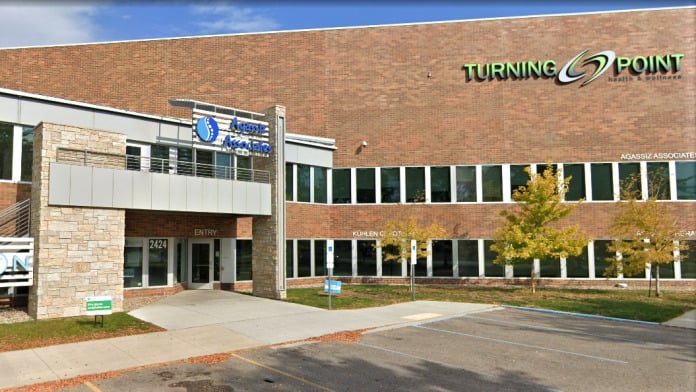 | Agassiz Associates PLLC: Anvinson Nicole CAgassiz Associates PLLC: Anvinson Nicole C provides comprehensive behavioral health and drug rehabilitation services for adolescents, men, and women facing behavioral health struggles or substance use disorders. Located in Grand Forks, North Dakota, the center offers care in an outpatient setting, accommodating various treatment needs.Key Features and Services: Outpatient Treatment: The center offers services in a low-intensity outpatient program tailored for both adolescents and adults. This program employs the Matrix Model, which focuses on evidence-based practices, including cognitive behavioral therapy (CBT). This approach encourages individuals to explore the origins of their addiction issues, allowing for targeted treatment of the root causes rather than just the symptoms. High-Intensity Outpatient Program: For those needing more robust support, the high-intensity outpatient program is available. This program aims to delve deeper into the reasons behind substance use, helping clients develop new behaviors and thinking patterns that foster a life of intentional and lasting sobriety. Comprehensive Counseling and Education: Both outpatient programs include: Individual and group counseling sessions Education on addiction and recovery Relapse prevention assessments to help clients reflect on their progress and plan their paths forward DUI and Addiction Education Seminars: The center also offers DUI seminars and addiction education seminars designed for recovering individuals and their families, providing valuable information and support. Aftercare Services: As clients transition out of the outpatient program, Agassiz Associates provides professional aftercare services to ensure ongoing support and guidance in maintaining sobriety. Conclusion: Agassiz Associates PLLC: Anvinson Nicole C is dedicated to providing effective outpatient behavioral health and rehabilitation services for individuals struggling with substance use disorders. With a focus on evidence-based practices, comprehensive counseling, and supportive aftercare, the center aims to empower clients to achieve meaningful recovery and lasting change. For more information about their services or to schedule an appointment, please contact Agassiz Associates directly. 1407 24th Ave S #520, Grand Forks, ND 58201 | Levels of Care:Intensive Outpatient (IOP)outpatientAftercare SupportIntervention ServicesMedically Assisted Detox Payment Options:Self-Pay Options Private insurance | ||
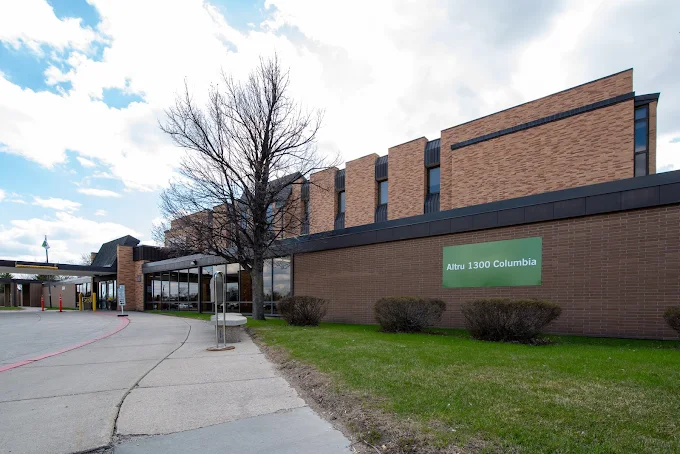 | Altru ClinicAltru 1300 Columbia specializes in intensive inpatient mental health care for youth and adults, offering dedicated programming for various populations, including seniors, children, teens, individuals with hearing impairments, and those facing co-occurring mental illness and addiction.Key Features and Services: Intensive Inpatient Care: The facility provides a highly structured and supportive environment for clients to focus on their recovery. The inpatient program includes: Mental health assessments Personalized treatment planning Comprehensive case management Therapeutic Modalities: Treatment combines psychotherapy with evidence-based complementary therapies and recovery-focused life skills development. Key modalities include: Individual, Group, and Family Counseling: Utilizing trauma-informed approaches and a range of proven therapies, including: Cognitive Behavioral Therapy (CBT) Dialectical Behavioral Therapy (DBT) Experiential Therapy: Engaging clients in therapeutic activities to promote healing. Nutrition Therapy: Addressing dietary needs as part of mental health treatment. Electroconvulsive Therapy (ECT): Offered for treatment-resistant mental illness. Nicotine Replacement Programs: Supporting clients in managing nicotine addiction. Aftercare and Transitional Support: Altru Hospital emphasizes long-term recovery through aftercare planning and transitional support. This includes: Referrals for medical, mental health, and social services. Assistance transitioning to sober living environments, outpatient care, or community-based 12 Step programs. Insurance and Financial Assistance: Altru 1300 Columbia accepts various forms of insurance, including: Military insurance, self-pay, Medicare, and Medicaid. In-network with BlueCross/BlueShield, with potential acceptance of other providers like Aetna, Beacon, Optum, and ValueCare. Financial assistance options are available, and clients are encouraged to check with their insurance provider regarding coverage and out-of-network benefits. Conclusion: Altru 1300 Columbia is dedicated to providing comprehensive inpatient mental health care tailored to the needs of diverse populations. With a focus on evidence-based treatment and long-term recovery support, the facility aims to empower clients to achieve lasting mental health and well-being. For more information about their services or to inquire about admissions, please contact Altru 1300 Columbia directly. 1300 S Columbia Rd, Grand Forks, ND 58201 | Levels of Care:InpatientIntensive Outpatient (IOP)outpatientPartial Hospitalization Program (PHP) Payment Options:Medicare Medicaid Private insurance Self-Pay Options Financial Aid Military Insurance | ||
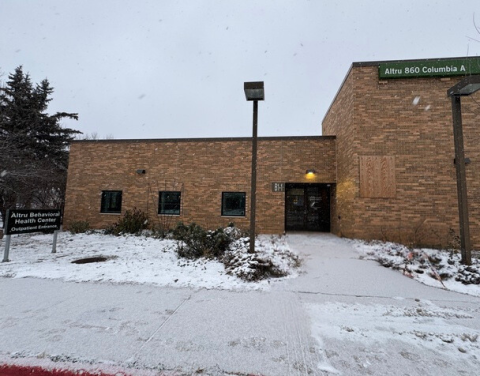 | Altru Psychiatry CenterAltru Psychiatry Center is part of the Altru healthcare system, located in Grand Forks, North Dakota. The center specializes in comprehensive outpatient mental health services, including psychotherapy, case management, and medication-assisted treatment for opioid use disorder (OUD).Key Features and Services: Comprehensive Outpatient Mental Health Services: The center offers a range of outpatient services designed to address various mental health challenges, including: Psychotherapy for individuals seeking support for conditions such as post-traumatic stress disorder (PTSD), depression, anxiety, and other mental health issues. Case management to help clients navigate their treatment and connect with necessary resources. Medication-Assisted Treatment (MAT): Altru Psychiatry Center provides MAT specifically for clients with opioid use disorder. This includes: Suboxone: Prescribed to alleviate withdrawal symptoms and assist with chronic pain management for those with a high tolerance to opioid pain medications. Counseling to help clients identify and understand the underlying issues related to their substance use, as well as connecting them to community resources such as support groups. Integrated Healthcare: As part of the larger hospital system, the psychiatry center offers integrated healthcare. Clients benefit from a collaborative treatment team, which includes psychotherapists, psychiatrists, and nurse practitioners who work together to develop personalized treatment plans. Assessment and Personalized Treatment Plans: After an initial assessment, the treatment team creates a tailored plan to address individual mental health challenges. Clients receive ongoing support to manage their conditions and work toward recovery. Support for Recovery: The center assists clients with family support, school or work issues, and finding adequate housing. Clients are guided in developing a recovery plan, setting future goals, and engaging in healthy activities to reduce the risk of returning to substance use. Conclusion: Altru Psychiatry Center is committed to providing effective outpatient mental health and addiction treatment services. With a focus on integrated healthcare and personalized support, the center aims to empower clients to overcome their challenges and achieve lasting recovery. For more information about their services or to schedule an appointment, please contact Altru Psychiatry Center directly. 860 S Columbia Rd, Grand Forks, ND 58201 | Levels of Care:outpatient Payment Options:Medicare Medicaid Private insurance Self-Pay Options Financial Aid Military Insurance | ||
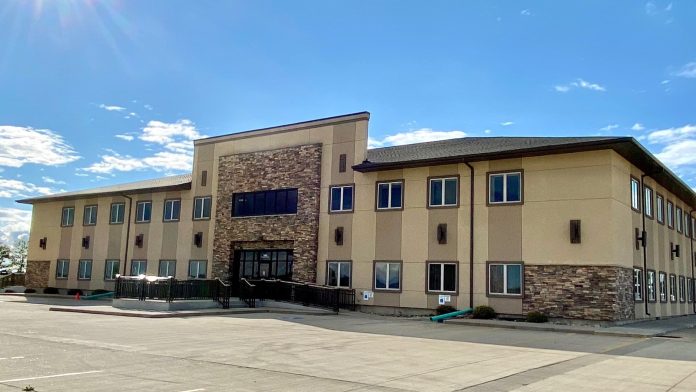 | Badlands Human Service CenterBadlands Human Service Center – Chemical Dependency Program is a private rehabilitation facility dedicated to treating a variety of substance abuse addictions, including alcoholism and opiate addiction. The center provides a range of services tailored to meet the needs of individuals seeking recovery.Key Features and Services: Medical Detoxification: The program offers supervised medical treatment to safely manage withdrawal symptoms during detoxification. This ensures that clients can begin their recovery journey in a safe and supportive environment. Residential Care: The facility provides residential care that offers long-term support for addiction recovery. This immersive environment promotes full engagement in recovery, allowing clients to focus on healing away from daily triggers. Patients benefit from: Private rooms that provide personal space for reflection and undisturbed rest during treatment. Outpatient Addiction Therapy: For those who prefer to live at home while receiving treatment, the center offers flexible outpatient addiction therapy. This option allows clients to maintain their daily routines while engaging in regular therapy sessions. Additional Levels of Care: Badlands Human Service Center includes several levels of care, such as: Intensive Outpatient Programs (IOP): Providing more structured treatment for those needing additional support. Relapse Prevention: Strategies and tools to help clients avoid returning to substance use after treatment. Recovery Housing: Supportive living arrangements that promote a sober lifestyle. Specialty Rehab Programs: The center recognizes the unique needs of different populations and offers tailored care, including: Women\'s Specific Programs: Addressing the unique experiences and challenges faced by women in recovery. Gender-Specific Treatment for Men: Focused on the particular challenges men encounter in the recovery process. Age-Appropriate Treatment for Teens: Designed to address adolescent-specific issues and support younger clients effectively. Conclusion: Badlands Human Service Center – Chemical Dependency Program is committed to providing effective treatment for individuals struggling with substance abuse disorders. With a comprehensive range of services and a focus on tailored care, the center aims to empower clients to achieve lasting recovery. For more information about their services or to schedule an appointment, please contact Badlands Human Service Center directly. 1463 Interstate 94 Business Loop E, Dickinson, ND 58601 | Levels of Care:InpatientIntensive Outpatient (IOP)outpatientSober Living HomesAftercare SupportMedically Assisted Detox Payment Options:Medicare Medicaid Private insurance Self-Pay Options Financial Aid Military Insurance | ||
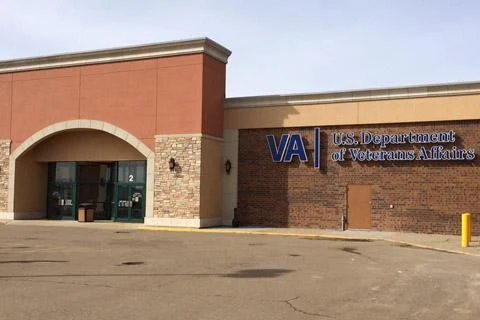 | Bismarck VA ClinicThe Bismarck VA Clinic is a community-based outpatient clinic dedicated to providing comprehensive healthcare services to veterans in Bismarck, ND. The clinic focuses on both primary care and mental health care, ensuring that veterans receive the support they need.Key Features and Services: Primary Care Services: The clinic offers a range of primary care services tailored to meet the specific health needs of veterans. This includes routine check-ups, preventive care, and management of chronic conditions. Mental Health Care: Mental health services are a vital component of the clinic\'s offerings, addressing issues such as depression, anxiety, PTSD, and other mental health conditions that veterans may face. Telehealth Services: To enhance accessibility and convenience, the Bismarck VA Clinic provides telehealth services. This allows veterans to connect with their healthcare team through video conferencing and health monitoring devices, making it easier to receive timely care without the need for in-person visits. Technology-Driven Care: The clinic utilizes innovative healthcare technology to improve patient access and engagement, ensuring that veterans can stay connected to their healthcare providers and receive necessary support efficiently. Conclusion: The Bismarck VA Clinic is committed to delivering quality healthcare services to veterans, focusing on primary care and mental health care. With the integration of telehealth services, the clinic makes accessing care more convenient and timely for those who have served. For more information or to schedule an appointment, please contact the Bismarck VA Clinic directly. 2700 State St # 5, Bismarck, ND 58503 | Levels of Care:InpatientoutpatientIntensive Outpatient (IOP)Aftercare Support12-StepPartial Hospitalization Program (PHP)Medically Assisted Detox24-Hour Clinical Care Payment Options:Medicare Medicaid Private insurance Self-Pay Options Financial Aid Military Insurance | ||
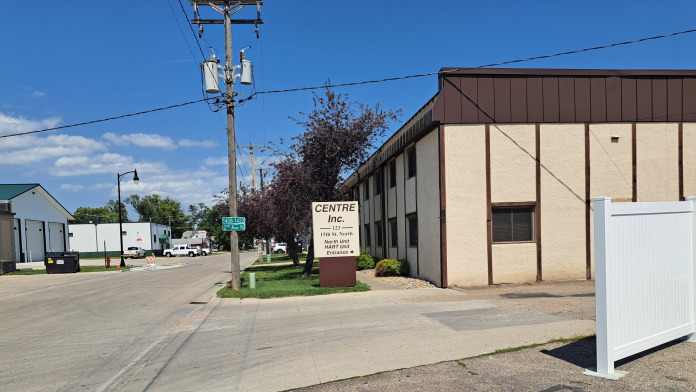 | Centre - Fargo, NDThe Centre operates a low-cost halfway house and residential reentry program for adult men in Fargo, North Dakota. This 84-bed transitional facility provides a structured and supportive environment aimed at helping individuals rebuild their lives and successfully reintegrate into the community.Key Features and Services: Transitional Living: The facility is situated just 3 miles from downtown Fargo, close to cultural landmarks such as the Fargo Civic Center and the Plains Art Museum, as well as recreational areas like Lindenwood Park. This location offers residents opportunities for engaging in the local culture and outdoor activities. Supportive Environment: The program aims to prepare residents for independent living after incarceration. It focuses on developing social problem-solving skills and emphasizes accountability and personal responsibility, which are essential for healing. Substance Use Disorder Treatment: A major component of the program is dedicated to treating substance use disorders. The clinical team employs various proven methods for lasting recovery, including: Cognitive restructuring Motivational enhancement Seeking safety techniques Comprehensive Programming: Residents are required to participate in: AA/NA meetings Vocational training and employment skills groups Community service activities Educational support Counseling sessions Cultural diversity workshops Life skills sessions focusing on parenting, money management, and wellness Recreation and Leisure: While the program includes intensive programming, there is also time allocated for recreation and leisure activities, promoting overall well-being. Family and Faith-Based Support: The program places a strong emphasis on the importance of family and faith-based relationships in holistic recovery. Case Management and Aftercare: Drug testing, substance use aftercare, and case management are integral parts of the program. Each resident works with a case manager who assists in job placement and finding appropriate housing. Length of Stay: The duration of stays varies based on the completion of individualized treatment plans and progress toward reintegration. Residents may also be discharged upon successfully completing their court-ordered sentence. Conclusion: The Centre Halfway House and Residential Reentry Program provides a supportive and structured environment for adult men transitioning back into society. With a focus on accountability, treatment for substance use disorders, and the development of essential life skills, the program aims to prepare residents for successful independent living. For more information about their services or to inquire about admissions, please contact the Centre directly. 123 15th St N, Fargo, ND 58102 | Levels of Care:InpatientoutpatientSober Living HomesAftercare Support12-StepIntensive Outpatient (IOP) Payment Options:Medicaid Private insurance Self-Pay Options Financial Aid | ||
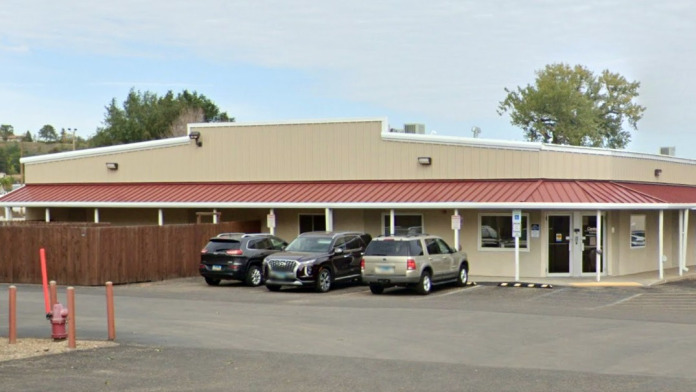 | Centre Inc. - Mandan, NDCentre Inc. is a private rehabilitation facility specializing in the treatment of various substance abuse addictions, including alcoholism and opiate addiction. The center provides a comprehensive range of services designed to support individuals throughout their recovery journey.Key Features and Services: Medical Detoxification: Centre Inc. offers supervised medical treatment to safely manage withdrawal symptoms during detoxification. This ensures clients can start their recovery in a safe and supportive environment. Residential Care: The facility provides residential care that offers long-term support for addiction recovery. This immersive environment allows clients to focus on their healing away from daily triggers, promoting full engagement in recovery. Outpatient Addiction Therapy: For individuals who prefer to maintain their daily routines, the center offers flexible outpatient addiction therapy. This option allows patients to live at home while receiving regular treatment. Additional Levels of Care: Centre Inc. includes several levels of care to address various needs, such as: Relapse Prevention: Strategies to help clients avoid returning to substance use after treatment. Recovery Housing: Supportive living arrangements that encourage a sober lifestyle. 12-Step Therapy: Incorporating the principles of 12-step programs to support recovery. Specialty Rehab Programs: The center recognizes the diverse needs of different populations and offers tailored care, including: Women’s Specific Programs: Focused on the unique experiences and challenges faced by women in recovery. Gender-Specific Treatment for Men: Addressing the particular challenges men encounter in the recovery process. Age-Sensitive Addiction Treatment: Considering health and life-stage issues for older adults. Transportation Services: Patients at Centre Inc. benefit from private transportation services, allowing for discreet and convenient travel to appointments. Accreditations: Centre Inc. has received accreditations from the Substance Abuse and Mental Health Services Administration (SAMHSA), ensuring the quality and effectiveness of its programs. Conclusion: Centre Inc. is dedicated to providing effective treatment for individuals struggling with substance abuse disorders. With a range of services tailored to meet diverse needs, the center aims to empower clients to achieve lasting recovery. For more information about their services or to schedule an appointment, please contact Centre Inc. directly. 100 6th Ave SE, Mandan, ND 58554 | Levels of Care:InpatientoutpatientSober Living HomesAftercare Support12-Step24-Hour Clinical Care Payment Options:Private Insurance Self-Pay Options Financial Aid Medicare Military Insurance Medicaid | ||
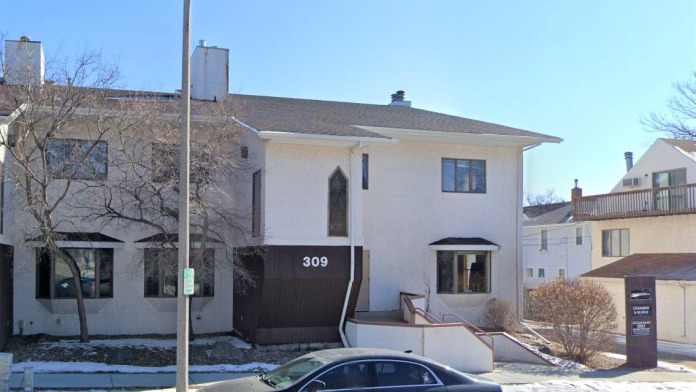 | Chambers & Blohm Psychological ServicesChambers & Blohm Psychological Services is a private rehabilitation facility specializing in the treatment of various substance abuse addictions, including alcoholism and co-occurring mental health disorders. The center offers a supportive environment where individuals can receive care tailored to their unique needs.Key Features and Services: Flexible Outpatient Addiction Therapy: The facility provides flexible outpatient addiction therapy, allowing patients to live at home while receiving regular treatment. This approach enables clients to maintain their daily routines and responsibilities while engaging in their recovery journey. Specialty Rehab Programs: Chambers & Blohm recognizes the diverse needs of individuals and offers tailored care, including: Women’s Specific Programs: Focusing on the unique experiences and challenges faced by women in recovery. Gender-Specific Treatment for Men: Addressing the specific challenges men encounter during their recovery process. Age-Appropriate Treatment for Teens: Designed to meet the specific needs of adolescents and support their recovery effectively. Mindfulness and Recreation: Patients have access to a yoga studio, providing a space to work on active mindfulness and improve flexibility. This recreational activity can be beneficial for mental health and overall well-being. Conclusion: Chambers & Blohm Psychological Services is dedicated to providing effective, personalized treatment for individuals struggling with substance abuse and co-occurring mental health disorders. With a focus on flexible outpatient therapy and specialty programs, the center aims to empower clients to achieve lasting recovery. For more information about their services or to schedule an appointment, please contact Chambers & Blohm Psychological Services directly. 309 N Mandan St #1, Bismarck, ND 58501 | Levels of Care:outpatient Payment Options:Medicare Medicaid Private insurance Self-Pay Options Financial Aid Military Insurance | ||
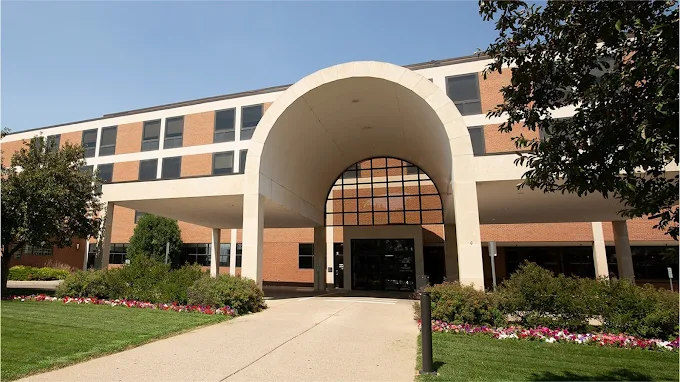 | CHI Saint Alexius Health - Archway Mental HealthCHI Saint Alexius Health Archway Mental Health provides comprehensive mental and behavioral health care services for youths and adults in Bismarck, North Dakota. Their programs are designed to meet the diverse needs of clients, including specialized services for seniors and those with co-occurring addictions and mental health disorders.Key Features and Services: Inpatient Treatment: The facility offers age-specific inpatient treatment programs for children, adults, and seniors who require around-the-clock care and supervision. This support is tailored to address a wide range of mental health concerns and behavioral health issues. While staying at the facility, clients can engage in: Individual therapy sessions Peer-based support groups Educational programming focused on their specific needs Outpatient Treatment: For those transitioning out of inpatient care or needing a lower level of supervision, the outpatient program provides essential support. Services include: Understanding addictions and identifying triggers Learning healthy coping skills for recovery Counseling and educational therapies Relapse prevention training A multi-disciplinary team collaborates with clients to create individualized treatment plans that address their specific needs, progress, and recovery goals. Aftercare Support: Aftercare support is a crucial component of the program, offering connections and referrals to outside providers. This may include assistance in areas such as: Transportation Transitional housing Career development Telemedicine Consultations: CHI Saint Alexius Health Archway Mental Health also offers telemedicine consultations, providing convenient access to mental health services. Insurance and Coverage: The facility is in-network with most commercial insurance plans. Clients are encouraged to verify their coverage with their insurance provider, as out-of-network benefits can vary. Conclusion: CHI Saint Alexius Health Archway Mental Health is committed to providing effective and compassionate mental and behavioral health care for individuals of all ages. With a focus on individualized treatment and comprehensive support, the facility aims to empower clients on their journey to recovery. For more information about their services or to schedule an appointment, please contact CHI Saint Alexius Health Archway Mental Health directly. 900 E Broadway Ave, Bismarck, ND 58501 | Levels of Care:InpatientoutpatientMedically Assisted DetoxPartial Hospitalization Program (PHP)Intensive Outpatient (IOP) Payment Options:Medicare Medicaid Private insurance Self-Pay Options Financial Aid Military Insurance | 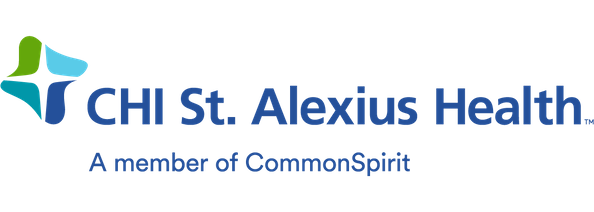 | |
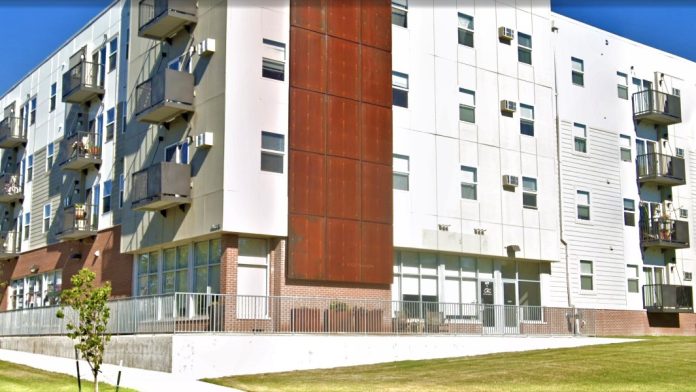 | Choice Recovery CounselingChoice Recovery Counseling is a private counseling practice dedicated to providing support for individuals struggling with substance abuse and addiction. The facility offers treatment primarily for adults and accepts limited insurance options for counseling sessions.Key Features and Services: Counseling Services for Addiction Treatment: Individual Therapy: One-on-one counseling sessions focus on personal goals related to addiction recovery. Clients work with their assigned counselor to develop strategies and apply new information to support healthier daily choices. Group Therapy: Group sessions provide a supportive environment where participants can share experiences and learn from one another. This collaborative approach helps enhance recovery efforts. Relapse Prevention Group: A dedicated relapse prevention group meets weekly for 1 hour and 30 minutes. These sessions focus on addressing daily stressors and celebrating successes in recovery. The group is particularly beneficial for individuals who may be at risk of relapse, providing them with tools and strategies to maintain their recovery journey. DUI Support Services: For individuals facing DUI charges, Choice Recovery Counseling offers evaluation and aftercare services. Additionally, they provide a 16-hour educational DUI seminar group aimed at helping participants understand the implications of their actions and promoting responsible behavior. Education and Support: The practice emphasizes education around substance abuse and incorporates Choice Theory, which helps clients understand the impact of their choices and behaviors on their recovery. Conclusion: Choice Recovery Counseling is committed to supporting individuals in their recovery from substance abuse and addiction. With a focus on individualized treatment and group support, the practice aims to empower clients to make positive changes in their lives. For more information about their services or to schedule an appointment, please contact Choice Recovery Counseling directly. 705 E Highland Dr Suite E, Williston, ND 58801 | Levels of Care:outpatientAftercare Support Payment Options:Self-Pay Options Private insurance | ||
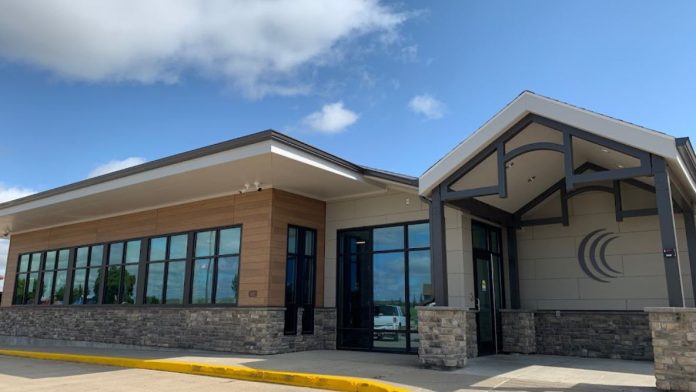 | Coal Country Community Health Center - Beulah, NDCoal Country Community Health Center provides quality and affordable outpatient support for individuals dealing with substance use disorders (SUD). Located along Highway 49, the center is easily accessible and benefits from a supportive small-community atmosphere that fosters recovery without the distractions often found in larger urban areas. Its proximity to natural features such as Lake Sakakawea and the Knife River Indian Villages enhances the area’s calming and restorative appeal.Key Features and Services: Treatment Options: Intensive Outpatient Programs (IOP): Suitable for individuals needing considerable support, this structured program typically involves at least nine hours of therapy weekly. Standard Outpatient Programs (OP): Offers flexibility for those who can maintain their daily commitments while receiving therapy. Substance Use Services: Services include drug/alcohol evaluations, early intervention or prevention education, and relapse prevention and aftercare groups. Holistic Support: In addition to substance use treatment, the center provides health and wellness screenings, nutrition education, and tobacco and nicotine cessation services to assist individuals in quitting smoking. Personalized Treatment Plans: Clients undergo a complete intake assessment to identify treatment needs, leading to the creation of an individualized treatment plan. The clinical team may refer clients to higher intensity programs, such as day treatment or residential inpatient care, if needed. Counseling and Education: Both IOP and OP programs primarily involve group counseling alongside individual counseling and educational classes focused on recovery skill building. Crisis intervention services are also available to help stabilize clients before therapy begins. Virtual Care: The center offers virtual care options, allowing clients to schedule therapeutic support from home or on the go using mobile devices or computers. This provides a safe and convenient way to access care. Family Therapy and Medication Services: The recovery program includes family therapy and medication management services to address co-occurring mental health issues. Conclusion: Coal Country Community Health Center in Beulah is dedicated to providing comprehensive and accessible outpatient support for individuals facing substance use challenges. With a focus on personalized treatment, holistic support, and flexible programming, the center aims to empower clients on their recovery journey. For more information about their services or to schedule an appointment, please contact Coal Country Community Health Center directly. 1312 ND-49, Beulah, ND 58523 | Levels of Care:outpatientAftercare Support Payment Options:Medicare Medicaid Private insurance Self-Pay Options Financial Aid Military Insurance |  | |
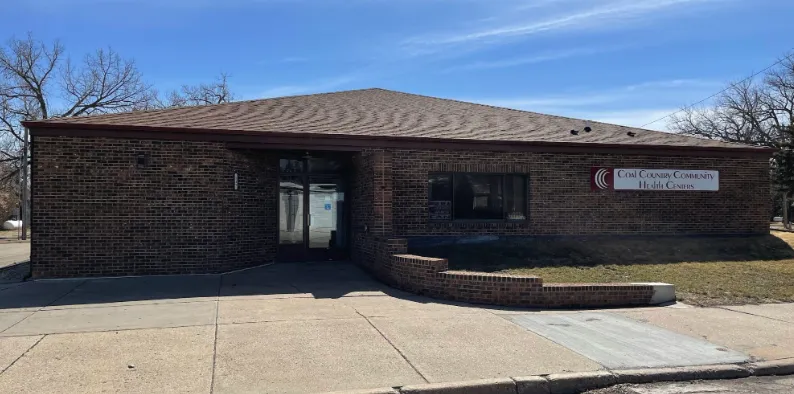 | Coal Country Community Health Center - Center, NDCoal Country Community Health Center is a not-for-profit organization dedicated to providing high-quality healthcare to the local community. The center offers a comprehensive range of services, including medical care, behavioral health, and addiction treatment, all designed to support the well-being of individuals and families.Key Features and Services: Integrated Healthcare Model: CCCHC stands out with its integrated approach to healthcare. They provide a combination of primary care, behavioral health, substance use disorder (SUD) treatment, and dental care, allowing clients to address all aspects of their health in one convenient location. Personalized Outpatient Support: The SUD treatment program is part of a broader network of care. Outpatient support allows individuals to work on their recovery while remaining connected to daily life. The program includes relapse prevention strategies, which are essential for maintaining recovery after treatment. Personalized Treatment Plans: Patients collaborate with their care teams to create individualized treatment plans tailored to their specific goals and needs. If more intensive care is necessary, referrals to appropriate services can be made. Tobacco Cessation Program: For those looking to quit tobacco, the center offers a tobacco cessation program. Clients work with a Tobacco Treatment Specialist (TTS) who helps develop a quit plan and provides ongoing support to ensure success. Mental Health Services for All Ages: While SUD treatment primarily focuses on adults, CCCHC offers mental healthcare services for all age groups. The I.M.P.A.C.T. Program specifically assists younger family members by integrating mental and physical health services in schools to address challenges such as substance use early on. Insurance and Affordability: CCCHC works with various insurance providers, including Medicaid and Medicare, and offers a sliding fee scale to make treatment more affordable for everyone. Conclusion: Coal Country Community Health Center is committed to delivering comprehensive and compassionate care to individuals and families. With its integrated healthcare model, personalized treatment options, and supportive environment in Center, North Dakota, CCCHC is a strong choice for those seeking recovery and overall health improvement. For more information about their services or to schedule an appointment, please contact Coal Country Community Health Center directly. 111 Main St E, Center, ND 58530 | Levels of Care:outpatientAftercare Support Payment Options:Medicare Medicaid Private insurance Self-Pay Options Financial Aid Military Insurance |  | |
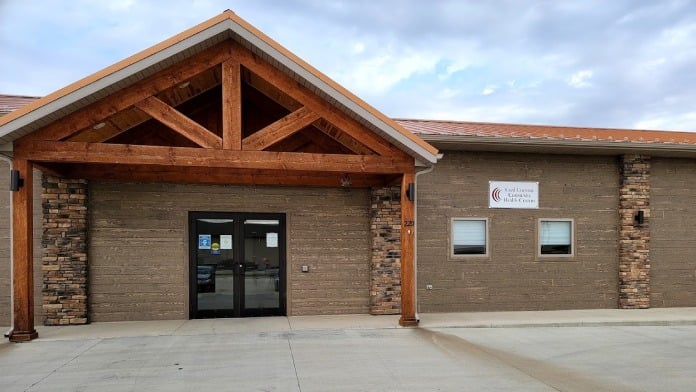 | Coal Country Community Health Centers - Killdeer, NDCoal Country Community Health Centers is an outpatient clinic dedicated to providing supportive care to adults, children, and families facing behavioral health challenges, including mental health issues and substance abuse struggles. The center emphasizes community-oriented care and accessibility for all.Key Features and Services: Insurance and Accessibility: The clinic accepts insurance policies from both public and private providers. They also offer sliding scale discounts, ensuring that no one is denied care due to an inability to pay. Federally Qualified Health Center: As a federally qualified health center, Coal Country Community Health Centers focuses on community-oriented care, providing outreach and health education. These services extend into the community through regularly hosted events, partnerships, and educational initiatives. Minimizing Stigma: The community-focused approach at the clinic aims to minimize the stigma associated with seeking treatment for addiction and mental health challenges. Clients receive support through connections to appropriate resources and services, such as the smoking cessation program. Support Groups: The Killdeer Clinic regularly hosts support groups and meetings throughout the Coal Country Community Health Center network. These groups address various issues, including caregiving challenges and provide safe spaces for individuals to connect with others facing health and wellness struggles. This peer support fosters a network for clients to rely on during difficult times. Substance Use Disorder Program: The clinic offers a comprehensive substance use disorder program, which includes: Drug and alcohol evaluations Intensive outpatient programming Specialized support groups focusing on relapse prevention and recovery topics Medication Support and Discharge Planning: Medication support may be part of the treatment program, and care teams work with clients to outline discharge plans once they complete the available services. If more intensive support is required, referrals to partner agencies or other community providers can be made. Conclusion: Coal Country Community Health Centers in Killdeer is committed to delivering accessible and compassionate care for individuals and families dealing with behavioral health challenges. With a focus on community support, personalized treatment options, and a commitment to reducing stigma, the center serves as a vital resource for those in need. For more information about their services or to schedule an appointment, please contact Coal Country Community Health Centers directly. 220 4th Ave SW, Killdeer, ND 58640 | Levels of Care:outpatientAftercare Support Payment Options:Medicare Medicaid Private insurance Self-Pay Options Financial Aid Military Insurance |  | |
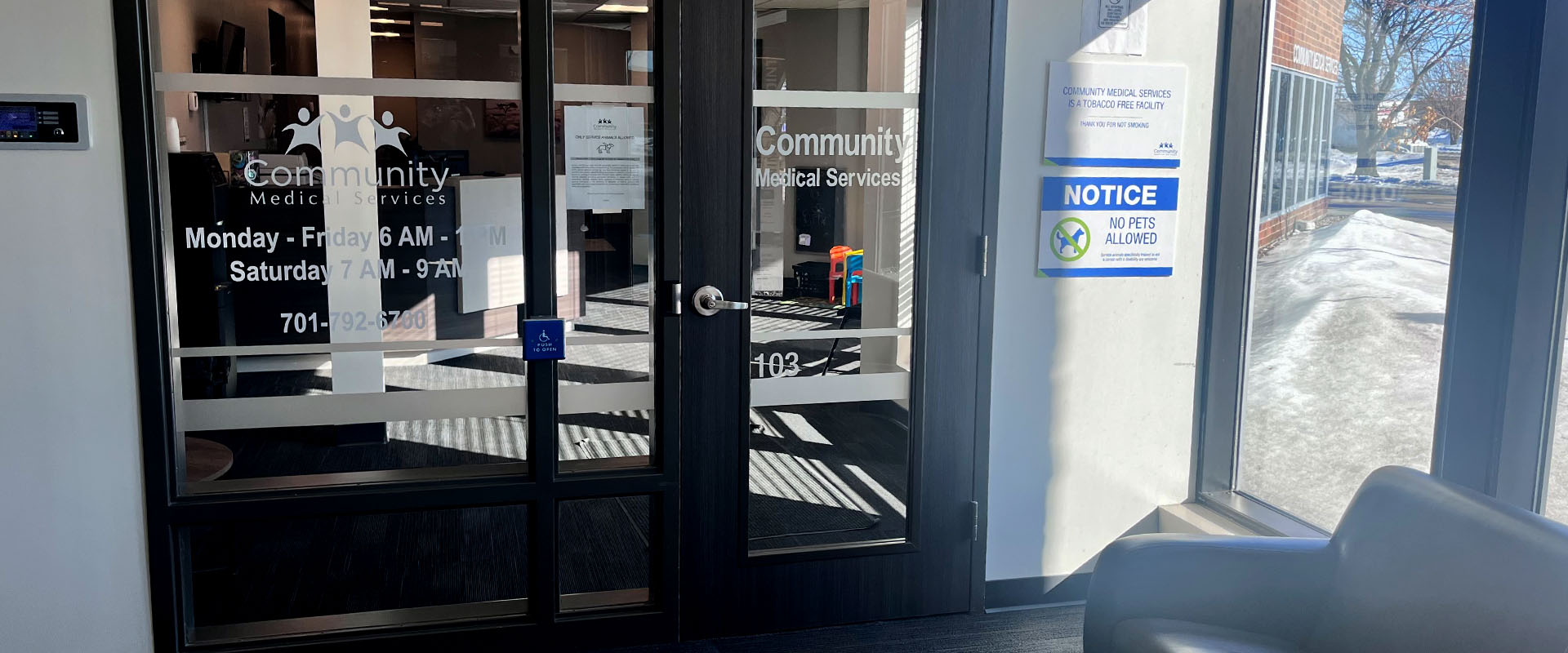 | Community Medical Services Grand ForksOverview: Community Medical Services is a private organization dedicated to providing outpatient treatment for adults and young adults seeking help for substance use disorders. The facility offers a range of programs and therapeutic approaches tailored to meet the needs of individuals struggling with addiction.Key Features and Services: Substance Use Treatment Programs: The center provides various treatment modalities, including: Cognitive Behavioral Therapy (CBT) Contingency Management Motivational Interviewing Relapse Prevention Substance Use Disorder (SUD) Counseling Counseling Services: Counseling plays a crucial role in treatment, helping patients understand the underlying causes of their addiction and developing tools for recovery. Both individual and group counseling are utilized to support patients throughout their journey. Opioid Addiction Treatment: Community Medical Services specializes in treating opioid addictions, including heroin, fentanyl, and prescription painkillers. The facility may use opioid medications such as methadone, buprenorphine, and naltrexone during detox and treatment phases. Recovery Support Services: The center offers comprehensive recovery support services designed to help patients regain stability and continue their recovery. These services include: Housing assistance Mentoring and peer support Transitional services, including discharge planning and naloxone education Overdose education and outcome follow-up after discharge Accreditations and Certifications: Community Medical Services holds several important certifications, including: State Department of Health accreditation Commission on Accreditation of Rehabilitation Facilities (CARF) accreditation Substance Abuse and Mental Health Services Administration (SAMHSA) certification for Opioid Treatment Programs (OTP) Drug Enforcement Agency (DEA) accreditation These certifications ensure that the facility meets the necessary standards for effective treatment. Insurance and Payment Options: The facility accepts a variety of payment options, including federal or government funding, Medicare, Medicaid, military insurance, and private health insurance, making it accessible to a broad range of patients. Trustscore Rating: Community Medical Services has a Trustscore rating of 4.2 on Recovered’s platform, reflecting positive user reviews and the facility\\\'s accreditations. Conclusion: Community Medical Services in Grand Forks provides a comprehensive and supportive environment for individuals seeking help with substance use disorders. With a focus on effective treatment, counseling, and recovery support, the center is dedicated to helping patients achieve lasting recovery. For more information or to schedule an appointment, please contact Community Medical Services directly. 2424 32nd Ave S Suite 103, Grand Forks, ND 58201 | Levels of Care:outpatientAftercare Support Payment Options:Medicare Medicaid Private insurance Self-Pay Options Financial Aid Military Insurance |
Find North Dakota drug rehabs in cities near you or sort by letter.
Calls to any general helpline will be answered or returned by one of the treatment providers listed, each of which is a paid advertiser:
Our helpline is available 24 hours a day, 7 days a week at no cost to you and with no obligation for you to enter into treatment. We are committed to providing support and guidance whenever you need it.
In some cases, Addiction Helpline America charges our verified partner a modest cost per call. This fee helps us cover the costs of building and maintaining our website, ensuring that we can continue to offer this valuable service to those in need.